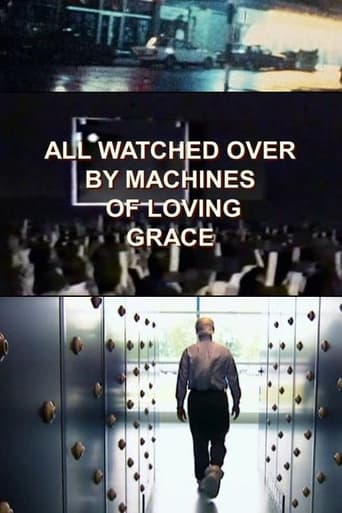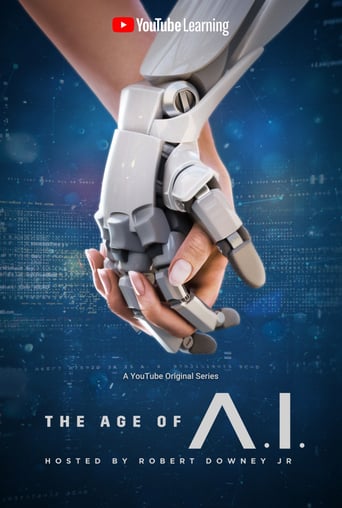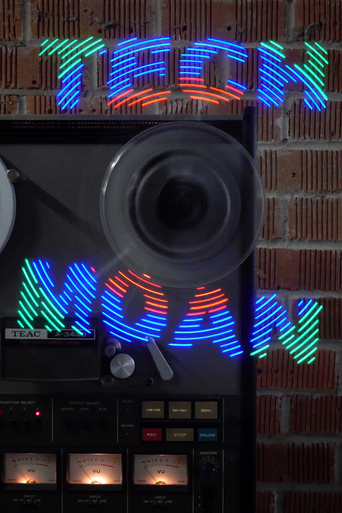Technology Connections Season 2

Technology Connections is a series of YouTube videos that explores numerous aspects of technological history, including how things work, the way things developed, and anything in between. There is no limit to what kinds of tech could be covered — one minute you may be learning about how electron guns draw pictures on an analog television, and the next you might be discovering that your modern toaster is a piece of junk.
Watch NowWith 30 Day Free Trial!
Technology Connections
2015
Technology Connections is a series of YouTube videos that explores numerous aspects of technological history, including how things work, the way things developed, and anything in between. There is no limit to what kinds of tech could be covered — one minute you may be learning about how electron guns draw pictures on an analog television, and the next you might be discovering that your modern toaster is a piece of junk.
Watch Trailer
With 30 Day Free Trial!
Technology Connections Season 2 Full Episode Guide
In the video today we look at current home automation technologies and what's behind them. I illustrate what's involved in adding a new device to a home automation network (it's actually quite easy) as well as demonstrate how they work.
It's not hard to make things safer. But sometimes people don't think about the tools they already have. With a simple reprogramming of an engine computer and perhaps with the addition of a sensor or two, the Jeep that killed Anton Yelchin could have saved his life. If cars were able to detect that their driver had exited, accidental rolling of a car could be a thing of the past. If we're lucky, it will quickly become one.
If you remember the cassette as sounding awful, I have news for you. They actually sound just fine. The Compact Cassette has a unique history in the world of sound, which we explore along with their attributes in this Tech Explorations video.
As more and more EV's make it onto our roadways, people start to freak out about how we're going to charge all these things. The thing is, they shouldn't. EV's are so much more efficient than their gasoline powered counterparts that they don't consume all that much electricity, in fact the size of the grid only needs to increase about 4.5% to accommodate an entirely electric commuter fleet. But people still worry about charging them. In this video, I explain why this shouldn't worry you in the slightest.
The technological advances that we've investigated so far have revolved around the vacuum tube. But the invention of the transistor really sparked a whole new era of sound. The advent of small circuits for sound reproduction meant that things could shrink. Tape went into cartridges. Amplifiers used less energy. And everything became more robust.
On Technology Connections, we looked at this machine briefly when we explored the invention of magnetic recording technology. Now, in long form, is a more thorough look at this machine and how it works. We start with an overview of operation, then take it apart to get a look at the inside.
We've come along way since the invention of the phonograph. But up to this point, artificial sound was still decidedly artificial sounding. "High fidelity" isn't really one technology, but a collection of technologies that combined to create natural sounding recordings. Similarly, stereo sound, though now completely universal, had to be introduced. This episode explores what makes a good high fidelity recording, and how stereo came to be.
From the Chevy Volt, to the Nissan Leaf, to the Tesla Model S, electric cars seem to be the way of the future. Join me as we explore a typical wind farm and discuss the potential for wind energy and electric cars. While today's electric grid propels these bastions of modern engineering with a fair bit of fossil fuel, it's clear that electric cars are pretty green and will only continue to get greener.
Rather than use electromagnets to cut a groove, why not use them with other magnets? By using materials that could be magnetized, the electromagnets used in the phonograph cartridge could be adapted into a magnetic recorder. This technology is still very much in use today, but in this episode of Technology Connections, we're exploring the two earliest forms of audio reproduction done with magnets: the wire recorder, and the magnetic tape recorder.
Once we figured out how to amplify a signal with a vacuum tube, the possibilities became endless for the world of sound recording. In this video, we explore how the invention of radio improved the phonograph record by introducing electric recording technology.
Free Trial Channels
Seasons


































